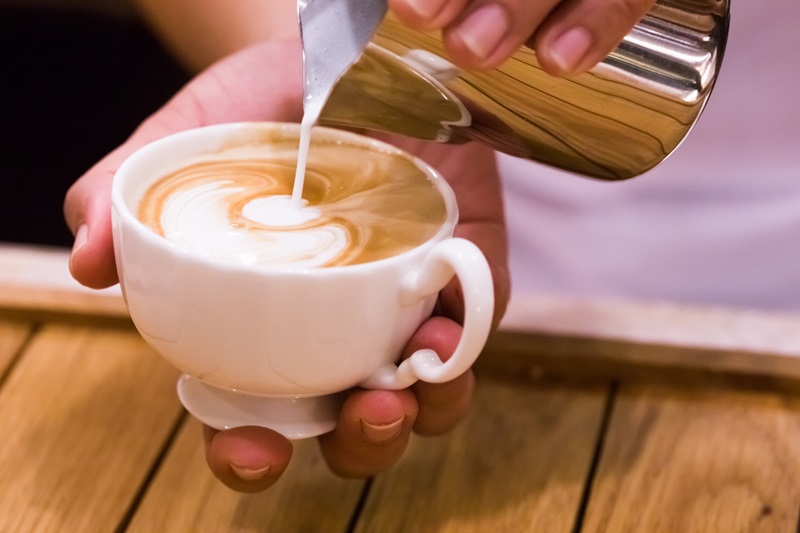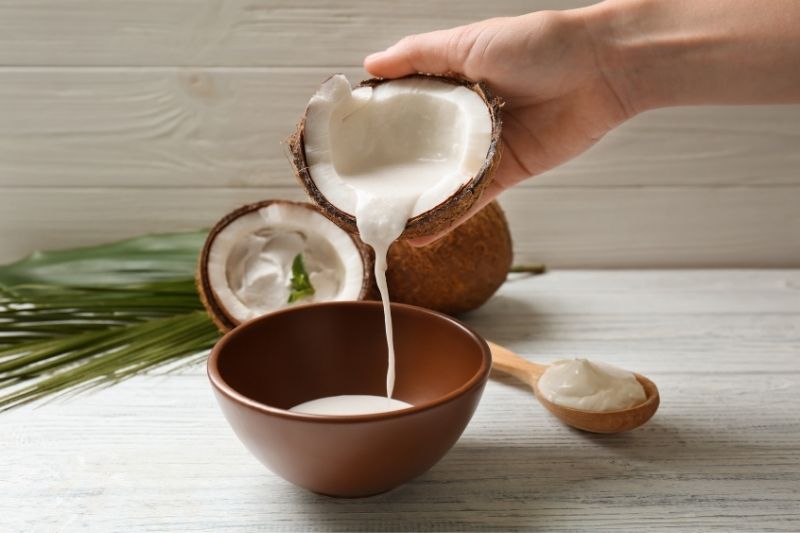Table cream is often commonly called light cream or coffee cream, which gives you a good idea of what the dairy product is used for: coffee and other hot drinks.
In the UK, table cream is commonly referred to as single cream.
Table cream usually has a milk fat percentage of 18%, but different brands will offer different fat percentages. As a general rule, table cream has between 18% and 30% fat.
To offer some perspective, single cream is usually between 12% and 18%, and double cream has a milk fat percentage of around 45% to 50%.
The thickest and richest type of cream is clotted cream, which has a milk fat percentage of up to 55%.
What Is Table Cream Used For?
As the name suggests, coffee cream (or table cream) is commonly used in coffee, tea and other hot drinks.
You can often buy it in flavoured form, including vanilla, various nuts, and even alcoholic flavours.
Table cream can also be used in a variety of other products, including sauces, desserts, and savoury dishes. The dairy product is thick and rich, and will offer a creamy texture and a milder flavour.

How Is Table Cream Made?
In order to get high quality table cream, liquid milk has the fat separated from it and the liquid is standardised until it reaches the desired milk fat percentage.
Can You Whip Table Cream?

Yes, you can whip table cream. In order to get it thick, fluffy, and peaked, you will need to whip table cream once it has been chilled in the fridge.
The cream does not behave well when heated, and it is runnier at room temperature than it is chilled.
What Can You Use Instead of Table Cream?
If a recipe calls for table cream but you don’t have any, you could use single cream. Ideally, you will want to use one with the highest milk fat percentage, as close to 18% as you can find.
If you do use single cream in a sauce (or half-and-half, if you’re in the United States), it will come out lighter and airier than it would with table cream. You can use something like corn starch to help thicken things up, if you need to.
Can I Use Table Cream in Hot Sauces?
Yes, you can use table cream in hot sauces, but you must bear in mind that the lower milk fat percentage will make it more prone to curdling. To ensure this doesn’t happen, table cream must be heated slowly, and not blasted with high heat.
As a general rule, the higher the milk fat percentage, the less likely it is to curdle when you cook or bake with it.
Can I Use Evaporated Milk Instead of Table Cream?
Yes, you can use evaporated milk instead of table cream, but there are a few things you will need to bear in mind.
Evaporated milk has a stronger and sweeter flavour than table cream. The flavour and sweetness will transfer to whatever you’re adding the cream/milk to. If you add evaporated milk to coffee, you will find that it tastes a lot sweeter.
Just as with single cream, you may need to thicken up sauces, etc. with corn starch when you use evaporated milk instead of table cream.
What Can I Use as a Vegan Substitute for Table Cream?

Coconut milk can work as a great substitute for dairy-free or vegan dishes. The milk can be runnier than you need for a recipe, but leaving it in the fridge for a few hours and then draining away the fluid will help to thicken it up.
You can use coconut milk as a low-calorie substitute for table cream as well as a vegan or dairy-free one.
Silken tofu is another vegan and dairy-free stand-in for table cream. This has a high water content when compared to other tofu types, and it is not only unpressed but also undrained.
To use silken tofu in a recipe in place of table cream, you will need to mix it, much in the same way as butter, until it softens and turns into more of a cream consistency.

Kim is a writer with more than a decade of experience, and a food enthusiast. When she’s not spending her time writing about her favourite dishes, you can find her in the cake aisle of her local supermarket, or making a mess in the kitchen.

